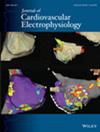Ablation of Premature Ventricular Contractions With Prepotentials Mapped Inside Coronary Cusps: When to Go Infra-Valvular?
Abstract
Background
Discrete prepotentials (DPPs) mapped inside aortic sinuses of Valsalva (ASVs) are deemed as reliable targets for ablation of premature ventricular contractions (PVCs). Nevertheless, ablation may still fail, necessitating further investigation. This study aimed to investigate the electrophysiological features and ablation approaches for PVCs with failed ablation inside ASVs, despite identified DPPs.
Methods and Results
Patients undergoing PVCs ablation requiring left ventricular outflow tract mapping were consecutively enrolled at six centers. Inclusion criteria comprised the presence of reproducible DPPs in ASVs and the earliest activation inside ASVs preceding the left ventricle. Patients were divided into ASV and non-ASV groups based on ablation outcomes within ASVs. Of 780 assessed patients, 40 (age 47.5 ± 19.4; 17 males) were included in the final analysis, with 10 in the non-ASV group. The interval from DPPs to QRS onset (DPP-QRS) in the ASV group significantly exceeded that in the non-ASV group (44.3 ± 6.7 ms vs. 15.0 ± 5.0 ms, p < 0.001). A DPP-QRS interval < 25 ms perfectly differentiated non-ASV from ASV cases. Successful ablation beneath ASVs was achieved in all non-ASV patients, despite the local potential preceding the QRS onset by only 2.3 ± 8.0 ms. In the non-ASV group, the distance between locations of targets and DPPs was 13.3 ± 4.2 mm, negatively correlated with the DPP-QRS interval (R2 = 0.618, p = 0.007). Over a 22-month follow-up, one patient in the non-ASV group had recurrence.
Conclusion
DPPs mapped inside ASVs, despite being the earliest sites, do not necessarily represent PVCs targets. An infra-valvular approach is suggested with a DPP-QRS interval < 25 ms.

 求助内容:
求助内容: 应助结果提醒方式:
应助结果提醒方式:


